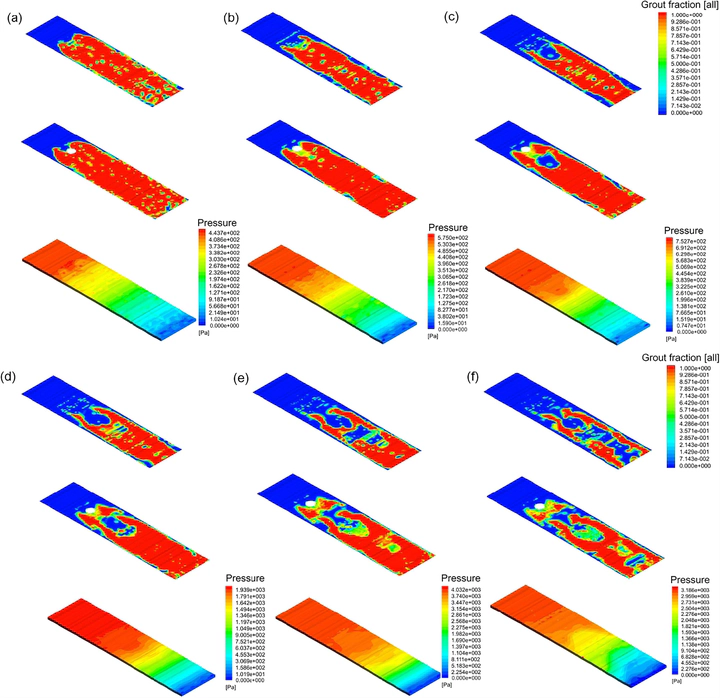Experimental-numerical investigation on grout diffusion and washout in rough rock fractures under flowing water

Abstract: Interaction between grouts and groundwater is frequently encountered in geotechnical engineering. Based on the self-developed apparatus, it is indicated that grout washout under flowing water appears to be spatially heterogeneous and the residual grout pattern largely depends on fracture morphology. To provide an insight on the grout behaviour under water washing, standing on the image-processing technique, the two-phase rough rock fracture model is developed. Two-phase (i.e. grout and water) interface is tracked through an efficient volume-of-fluid (VOF) method. Grout behaviour is described via a non-Newtonian (Bingham) fluid regarding its time-varying viscosity. The proposed model is verified through comparing with the experiment. Sensitivity tests involving various grouting parameters are then carried out to determine critical parameters’ influences on the diffusion-washout process of grouts. Fracture morphology is accounted for from two aspects of fracture roughness and shear slip, where shear slip is regarded under an initial fracture aperture. The residual grout pattern demonstrates different characteristics with the variation of fracture morphology. After statistical analysis, it is found that, under the same roughness, grout effectiveness under flowing conditions can be correlated with the coefficient of variation (COV) of aperture width.